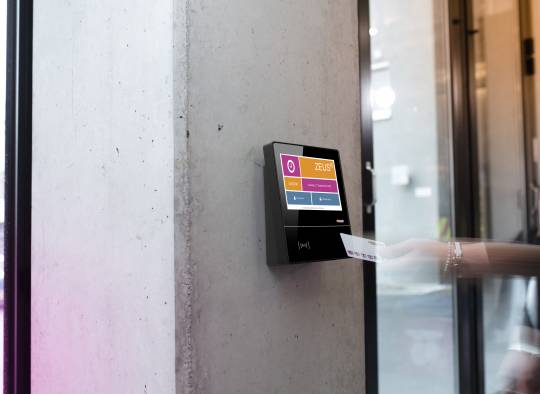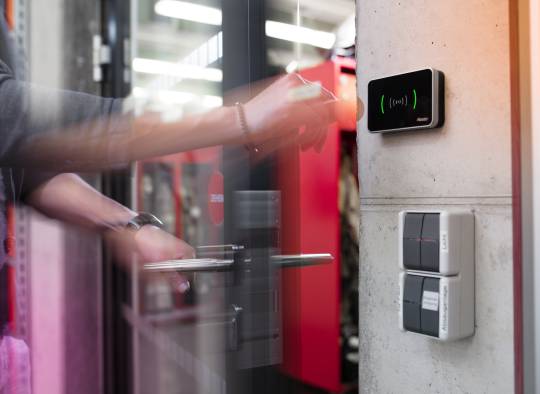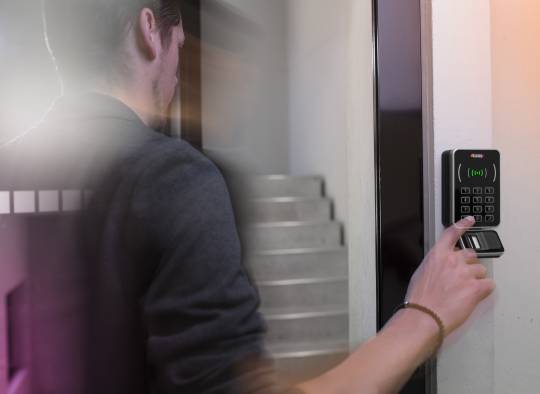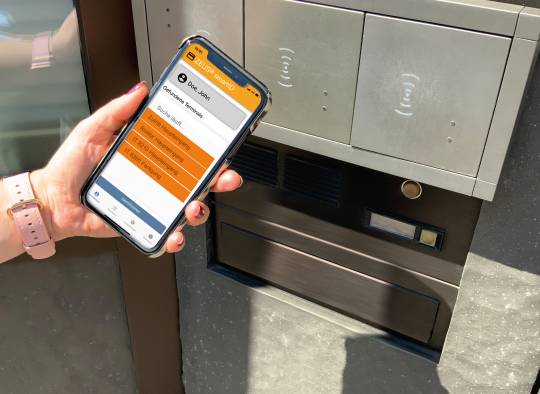
Keeping offices and commercial buildings secure is nothing new. Security has always been a priority in the workplace, whether it’s giving each employee a set of keys, or hiring a security guard at the front door. However, advancements in access control technology are enabling businesses to move beyond the outdated lock-and-key methods. In the scope of modern commercial building security, most offices now feature electronic door locks, which allow businesses to upgrade to keyless entry systems. Electronic door entry systems that use keyless locks are a great investment for small and enterprise businesses. There are many benefits to going keyless, including improved security, increased ROI, and a better experience for employees, staff, and visitors.
Commercial keyless door lock technology has been around for a few decades now, so it’s no surprise that most businesses already have a keyless entry system in their offices. Nevertheless, there are many different systems that also differ in terms of security. Get to know ZEUS® Access Control and ZEUS® keyless.
Security around the clock - is the focus of the ISGUS solution. With individual role profiles for day and night access control, you can optimally map your security needs. Limit access between different areas and always keep track of who has entered the property or building where and at what time.
A common type of commercial keyless entry system that uses a key card or key fob in place of a traditional key. Proximity cards, also known as prox cards, are a popular choice for many organizations, and can double as an ID badge. These credit card-sized credentials are easy to use and fairly inexpensive. However, as one of the first types of keyless credential created, they aren’t always the most secure. Businesses that want to use key cards for their commercial building should use encrypted smart cards for the best possible security.


Similar to key cards, office keyless door locks can use RFID key fobs to unlock the door. Key fobs are convenient because they can be added to a keychain to make them easily accessible for users, and they are usually small. Unlike a key card, a fob won’t have personal information or an ID photo on it, so they have a more generic look. Nevertheless, they are available in many colours and therefore also to match your CI.
Biometric access control enables unique identification of the person, as no ID cards can be passed on. It also prevents access from being denied if a person forgets the booking medium at home. Access can be authorised via the ISGUS terminals by fingerprint or facial recognition. The data is stored securely and in a non-recoverable format, so you can book without worry.


With this type of keyless entry, your smartphone is your key. App-based access control is quickly increasing in popularity, as it’s more convenient and often more secure than other keyless door entry for businesses. People are less likely to forget or lose their smartphone compared to a key card, and it also means less up-front cost for businesses. Another benefit of app-based keyless door entry systems is the ability to customize the features and functions to cater to specific security needs.